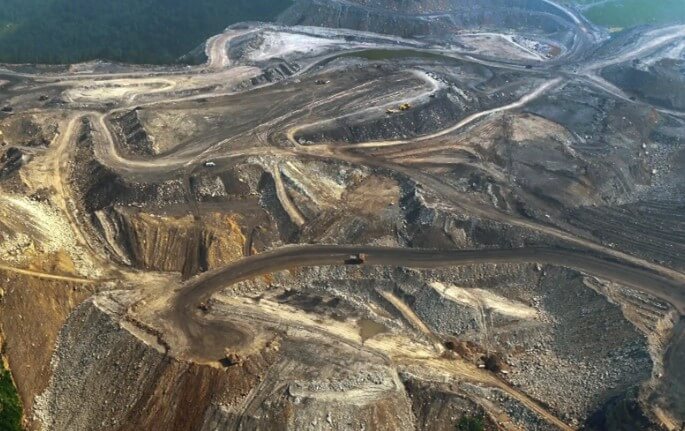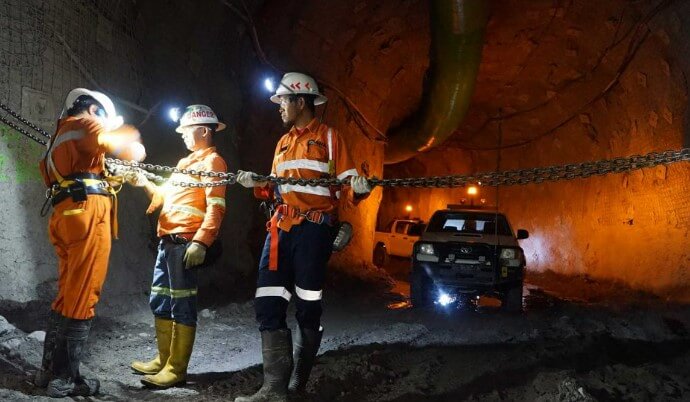Surface and underground mining are the two primary methods of extracting minerals and ores from the earth. Each method has its own unique processes, advantages, and environmental impacts. Understanding these methods is crucial for appreciating the complexities and technologies involved in mining operations. Becker Mining USA, a leading provider of mining equipment and services, offers insights into these mining techniques, focusing on how they support modern industries.
Surface Mining
Surface mining is a method used to extract minerals that are near the earth’s surface. It is the most common method of mining and has several techniques under its umbrella, each suited for different types of deposits and geographical conditions.

GET IN TOUCH
In a hurry? Call us at 276-285-3841
Types of Surface Mining
1. Open-Pit Mining
Open-pit mining involves digging a large pit in the ground to access and extract the ore. This method is typically used for extracting resources like copper, gold, iron, and coal. The process involves removing overburden (the soil and rock above the ore) to expose the mineral deposit. Open-pit mining is efficient for large-scale operations due to its ability to process large volumes of ore.
2. Strip Mining
Strip mining is mainly used for extracting coal and lignite. It involves removing long strips of overburden to expose the coal seam. Once the coal is removed, the overburden is replaced, and the process continues along the seam. This method is suitable for flat terrains where the coal seams are horizontal.
3. Mountaintop Removal Mining
This technique is a form of surface mining used predominantly in the Appalachian region of the United States. It involves removing the top of a mountain to access underlying coal seams. The removed earth is deposited in nearby valleys, which can have significant environmental impacts, including the alteration of landscapes and waterways.
4. Dredging
Dredging involves using a floating plant to excavate sediments from underwater mineral deposits. This method is often employed for extracting minerals like gold, tin, and diamonds from riverbeds, lakes, and oceans.
Advantages of Surface Mining
- Cost Efficiency: Surface mining is generally cheaper than underground mining due to the lower operational costs and simpler logistics.
- Safety: The open-air nature of surface mining reduces risks associated with underground conditions, such as cave-ins and toxic gas exposure.
- High Production Rates: Surface mining can extract larger quantities of ore in a shorter period compared to underground mining.
Environmental Impact
Surface mining significantly impacts the environment. It leads to habitat destruction, soil erosion, and pollution of water sources due to runoff from the mining sites. Rehabilitation efforts are essential to mitigate these effects, though complete restoration of the original ecosystem is challenging.

GET IN TOUCH
In a hurry? Call us at 276-285-3841
Underground Mining
Underground mining is used to extract minerals located deep within the earth. It involves constructing tunnels and shafts to reach the ore deposits. Becker Mining USA provides advanced equipment and solutions to enhance the efficiency and safety of underground mining operations.
Types of Underground Mining
1. Room and Pillar Mining
In this method, miners excavate rooms of ore while leaving pillars of untouched material to support the roof of the mine. This technique is commonly used for flat or gently dipping deposits, such as coal, salt, and potash. After the extraction, some mines may collapse the pillars in a controlled manner to extract the remaining ore.
2. Longwall Mining
Longwall mining involves using a longwall shearer, which moves back and forth across a coal seam. Hydraulic supports temporarily hold up the roof as the coal is extracted and then collapse behind the machine, allowing the overlying rock to settle. This method is highly efficient for extracting large, continuous coal seams.
3. Block Caving
Block caving is a large-scale method used for mining massive ore bodies. It involves undermining an ore body and allowing it to collapse under its own weight. The broken ore is then collected and hauled to the surface. This method is cost-effective for mining low-grade, high-tonnage deposits.
4. Cut and Fill Mining
This method involves cutting horizontal slices of the ore and filling the voids with waste material or tailings to support the mine structure. It is often used in irregular ore bodies or areas with weak rock formations, providing a safe and flexible mining approach.
Advantages of Underground Mining
- Less Surface Disruption: Underground mining has a smaller surface footprint compared to surface mining, preserving the natural landscape and reducing environmental impact.
- Selective Extraction: It allows for the selective extraction of high-grade ores, minimizing waste and improving ore quality.
- Access to Deep Deposits: Underground mining is the only feasible method for accessing deeply buried minerals that cannot be reached by surface mining techniques.
Safety Considerations
Underground mining poses significant safety challenges. Miners face risks from rock falls, gas explosions, flooding, and confined working conditions. Becker Mining USA offers advanced safety equipment, including ventilation systems, ground support products, and communication networks, to enhance miner safety.
Technological Advancements in Mining
Advancements in technology have revolutionized both surface and underground mining. Automation, robotics, and real-time monitoring systems have improved efficiency, safety, and environmental management.
Automation and Robotics
Automation reduces the need for manual labor, minimizing human exposure to hazardous conditions. Autonomous trucks, drills, and loaders are increasingly used in mining operations, allowing for continuous and efficient extraction processes. Robots are also employed for tasks such as equipment maintenance and ore sampling.
Real-Time Monitoring
Real-time monitoring systems provide continuous data on various parameters, such as air quality, equipment performance, and geological conditions. This information helps in making informed decisions, improving operational efficiency, and ensuring worker safety.
Sustainable Practices
Sustainable mining practices are gaining traction, focusing on reducing environmental impacts and conserving resources. Techniques such as precision mining, which targets specific areas of the ore body, and waste management strategies, including recycling and reprocessing, contribute to more sustainable operations.

GET IN TOUCH
In a hurry? Call us at 276-285-3841
Conclusion
Surface and underground mining are integral to the global supply chain, providing essential minerals and materials for various industries. Each method has its own set of advantages, challenges, and environmental impacts. Becker Mining USA plays a crucial role in advancing mining technologies and promoting safety and efficiency in mining operations.
Understanding the nuances of these mining methods is vital for appreciating the efforts involved in mineral extraction and the continuous improvements aimed at making mining more sustainable and safe. As technology evolves, the mining industry is poised to adopt more innovative solutions, ensuring a balance between resource extraction and environmental stewardship.
Ready to Optimize Your Mining Operations?
At Becker Mining USA, we are committed to enhancing the efficiency, safety, and sustainability of your mining operations. Whether you are involved in surface mining or underground mining, our cutting-edge equipment and solutions are designed to meet your unique challenges and requirements. Contact us today!
Products We Offer:
- Explosion Proof Equipment
- Transformers
- Arc Guard
- Longwall Electrical Systems
- Capacitor Trip Devices
- Electrical Equipments like capacitor banks, switch houses, junctions, and splice boxes.
Power up your productivity with Becker Mining's ground fault relays - the reliable and efficient solution for all your power distribution needs. Call us today!